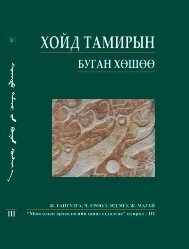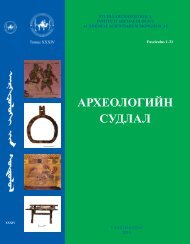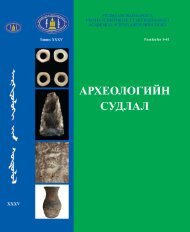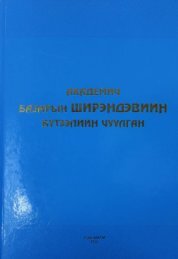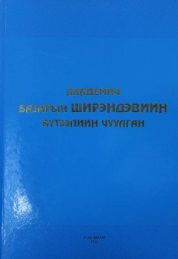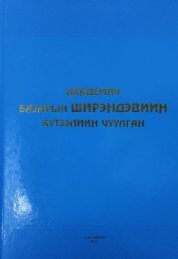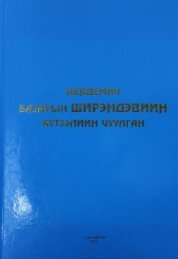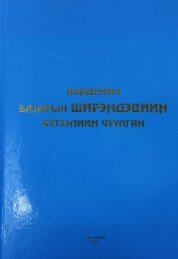2
You also want an ePaper? Increase the reach of your titles
YUMPU automatically turns print PDFs into web optimized ePapers that Google loves.
Group of arats Number of people % of the total<br />
Albatu (taxed population) 90 71.4%<br />
Kammdschalaga (series of secular feudal nobles) 18 14.3%<br />
Shabi (series of ecclesiastical feudal personages) 18 14.3%<br />
Total 126 100.0 1 %<br />
Out of 126 people, 32 were hired labourers (25.4%), and the rest were poor<br />
arats, who possessed an insignificant number of cattle, mainly sheep and goats,<br />
and families of 5-6 persons. Of these arats, the majority worked, in one way or<br />
another, either for the feudal lords or for rich arats. The information in “Mongol<br />
ardyn juramt tsergiyn durdatgaluud” 765 also depicts the role of arats and the<br />
most oppressed population in the victory of the revolution. These and other<br />
data once again confirm that the People`s Revolution was accomplished by the<br />
broad masses and was not an accidental coup by a small group, as some authors<br />
sometimes assert without any rhyme or reason.<br />
388<br />
III<br />
When we regard the arats as the major motive force of the revolution we must<br />
also take into account another important aspect: the impact of an international<br />
factor on the People`s Revolution.<br />
The national-liberation and revolutionary movement of the arats quite<br />
naturally echoed world events, mainly the revolutionary movements in the<br />
neighboring countries-China and Russia.<br />
The October Revolution, with its far-reaching aims and results was the first<br />
socialist revolution, and marked the beginning of a new social system in historythe<br />
Socialist system, which had the most profound impact on the march of events.<br />
The Mongolian oppressed arats deeply symphonized with and were greatly<br />
inspired by the ideas of the October Revolution which was very comprehensible<br />
and close to the hearts of the broad masses. The Mongolian and Russian people,<br />
since long before the People`s Revolution, had been growing closer to each other.<br />
The masses, represented by their revolutionary-democratic leadership<br />
accepted the just social understanding of the October revolution as a revolution of<br />
the working class accomplished for the first Socialist State as their only true ally.<br />
The rallied with its workers and peasants in their struggle against the common<br />
enemy-the Ungernites.<br />
Thus, under the revolutionizing influence of the arat national-liberation<br />
movement grew and strengthened, acquiring more and more and more an antifeudal<br />
and anti- imperialist character.<br />
This contributed to favorable conditions for a successful struggle of the<br />
Mongolian people for their freedom and independence, for the victory of the<br />
People`s Revolution and the advancement of the country towards Socialism.<br />
765<br />
Mongol ardyn juramt tsergiyn durtatgaluud. BNMAU-un. (“Narratives of the Mongolian People`s Partisans”)




